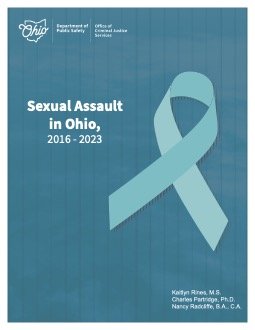By Gregorio Gimenez, Liubov Tkacheva, Katarína Svitková and Beatriz Barrado
The world’s urban population is booming; by 2050, six and a half billion people will be living in urban areas (World Bank, 2011a). On the one hand cities are significant population, infrastructure and economy hubs, as well as centers of political power; on the other hand, according to a time-proved assumption provided by the social sciences, the growth of cities tends to lead to disruption and crime (Shaw and McKay, 1942). The focus of this study on the city level is in line with the gradual transformation of governance and the growing importance of urban political economies (Sassen, 2006). In a public policy domain, the urban lens is useful for addressing site-specific issues – especially in the field of security (UN-Habitat, 2012; Jaitman and Guerrero, 2015). Crime rates tend to reveal geographic patterns, with higher concentration in urban areas (Eck and Weisburd, 2015; Johnson et al., 2007; Curman, Andersen and Brantingham, 2015; Gill, Wooditch and Weisburd, 2017). Understanding the degree to which urban concentration affects crime incidents is a fundamental issue to better plan crime prevention strategies and reduce violence. Focusing on the urban dimension of violent crime, the main aim of this study is to examine the relationship between the degree of urban concentration and the number of serious offenses, particularly homicides. Most existing research is focused on developed countries1 and often has methodological problems, mostly due to the use of databases with poor data quality. This problem is especially acute in developing countries, where crime statistics are usually fragmented, inconsistent, and aggregated only to the most macro levels. The lack of information and the weak national statistical systems are an important challenge for conducting rigorous research. It is important to emphasize that our contribution is not only in terms of providing additional evidence, but also in terms of the type of context that we analyze. As Ajzenman and Jaitman (2016:9) remark, providing empirical evidence from developing countries is crucial, given that “developing and developed countries are different in many dimensions, and also because crime levels tend to be much higher in the developing world and, in particular, in Latin America”. Specifically in Latin America, one of the main characteristics of the phenomenon of crime and violence is the degree of geographic concentration. Urban homicide rates are much higher than the average homicide rate, and almost half of all homicides are concentrated in 10% of municipalities (IDB, 2017). Violence in cities is not only homicidal and includes all types of crimes. Among the main causes associated with the concentration of crimes in urban areas, Alvarado and Muggah (2018) highlight those linked to the existence of large poor and peripheral neighbourhoods, the presence of disorderly urbanization and youth unemployment. Regarding our case study, Costa Rica, Vilalta Perdomo, Castillo and Torres (2016) highlight a series of specificities in the link between urbanization and delinquency. They point out that the Costa Rican population is largely concentrated around so-called Gran Área Metropolitana (GAM). They remark that, according to the Instituto Nacional de Estadística y Censos (INEC), in 2011 this area occupied 4% of the national territory and concentrated 53% of the population. Most of the country’s crimes take place in this area, which is characterized by higher unemployment, but also higher education and income levels. Higher education is related to higher earnings, which means that there are more potential victims for crimes against property. The authors also indicate that, within the GAM, San Jose is considered the most important zone of the country for the cocaine trade. Consequently, the GAM as a whole, and San Jose in particular, present the greatest challenges for public policies, especially in relation to urban development and public safety. Our in-depth econometric analysis of Costa Rica – a country of the Global South with significant urbanization and inequality rates – uses highly disaggregated socioeconomic data. It focuses on a wide range of types of crimes, in combination with econometric techniques which test for the presence of endogeineity, which constitutes a significant empirical contribution to the existing literature. The article is organized as follows. The next section presents a literature review in the field of urban violence in Latin America and Costa Rica. Its main objective is to provide a general context of citizen insecurity in the region and, particularly, the country, before presenting the case study in the third section. This empirical part develops an econometric model in order to demonstrate the connection between urban concentration and crime, particularly homicides.
DADOS, Rio de Janeiro, vol.64 (1): e20190127, 2021, 35p.








